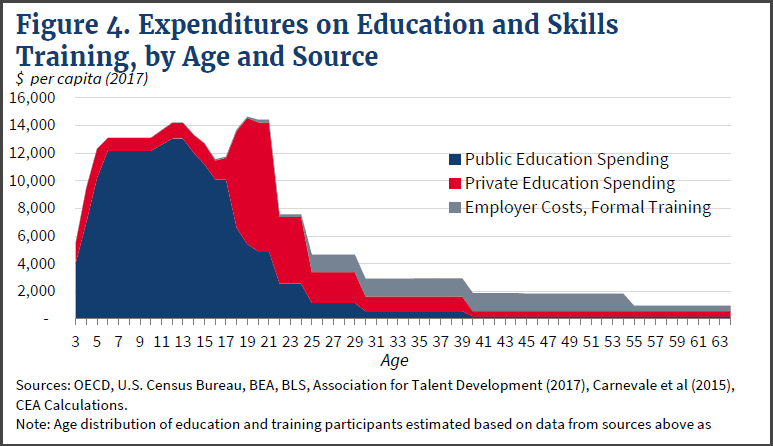Closing knowledge gaps with micro learning instead of hiring
Why many companies are investing in teaching their employees new skills and how it might make sense for you.
- Individual workers need to engage in life-long learning to remain employable in a constant and rapidly changing economy.
- Companies can’t hire their way out of the shortage of skilled workers.
- Companies that continue to rely on expensive and cumbersome Learning Management Systems and classroom training will find it challenging to teach employees new skills.

There is a widening gap between open jobs and the number of skilled people capable of filling them. Digitization, automation, and advances in artificial intelligence are increasingly disrupting jobs across a broad spectrum of industries. More work is done by less people, and the work being done is exceedingly more complex.
“The skills gap may leave an estimated 2.4 million positions unfilled between 2018 and 2028… Persistent skills shortage could risk $2.5 trillion economic output over the next decade.”
– Deloitte1
As companies invest in new technologies, they expect to be able to hire new employees to fill the roles that are created.
General Motors said last fall that it would cut 8,000 employees in product-development roles, while simultaneously aggressively expanding its electric and autonomous vehicle divisions. Verizon granted buyouts to 10,000 people last year, while also adding data scientists and marketers to expand its 5G wireless technology. Similarly, SAP recently said it would eliminate 4,400 jobs while adding 5,000 in cloud computing, artificial intelligence, blockchain and the Internet of Things (IoT).2
Unfortunately, there simply aren’t enough skilled workers to meet the demand. The current tightness in the job market is exasperating what was already seen as a critical challenge six years ago.3
So, companies are being forced to address the shortage of skilled workers beyond just hiring their way out of the problem. The way they prepare today will likely determine their future success.
Result of a Perfect Storm
“By 2030, as many as 375 million workers – or roughly 14 percent of the global workforce may need to switch occupational categories…”
– McKinsey4
As the types of skills needed by employers rapidly change, individual workers will need to engage in life-long learning in order to remain employable.5 This goes counter to the way our current educational system operates.

“In the United States, investment in skill development is largely ‘frontloaded’ during the first 25 years of life. After that, public contributions to formal education are substantially smaller, and employer training represents the most sizable investment in further developing the skills of the American workforce.”6
Coupled with that is the fact that educational institutions and employees don’t always have the same insight as their employers for what skills are needed. So, their response to market demand is always behind.
That means that people are currently training for jobs that likely won’t exist by the time they would typically be taking over for a retiring generation of employees. When they realize that they are inadequately prepared for the needs of the job market, they will have few options available to retrain themselves.
Employers’ attempts to close these gaps through reskilling has more than doubled since 2015, but the rate of change is outpacing their efforts as well.5
Reskilling Works

It is clearly in the best interest of federal and local government, higher education institutions and companies to develop a long-term solution to the skill shortage. However, most fast moving, modern companies can’t afford to wait for the slow machinations of bureaucracy to solve the problem. If you’re not inclined to wait, there are case studies that can help to inform your own path.
AT&T is the most frequently cited2,7,8 example of a company that saw the coming storm and invested heavily in its own employees.
Beginning in 2008, AT&T conducted research to determine how it could stay competitive in a market that was rapidly changing from land-based technology to mobile devices. Executives realized that AT&T’s workforce lacked the science, technology, engineering and math skills the company would need in the future. Equally troubling were the 100,000 employees whose jobs were directly tied to hardware that wouldn’t exist in 10 years.7
In response, AT&T planned a radical change to its training and development program. It created a large-scale reskilling program to retrain employees in jobs that would benefit the company and its employees in the years ahead. The company invested $1 billion in the ongoing program, that will ultimately retrain 250,000 employees. Beyond the obvious benefit of quickly and efficiently filling important new roles, AT&T retains employees who know the company culture and have institutional knowledge that can’t be replaced.
As you read this, you may be thinking — like a lot of other employers — that after investing in training, employees will be hired away and the effort will be wasted. 6
At AT&T, they found much the opposite to be true. Employees who participated in the reskilling program are twice as likely to be hired for mission-critical jobs. Employees are also four times more likely to make a career advancement. The company is also hiring less contractors for jobs requiring technical skills. So employees are more likely to stay.
Other companies are launching reskilling/retraining/relearning programs as well:2
- JPMorgan Chase & Co. recently announced a plan to work with MIT to forecast emerging skillsets and develop training programs.
- Walmart is using savings from automating repetitive tasks to reskill employees for customer service work.
- Amazon is beginning a program that will offer a path for employees from warehouses to data centers and twice the earnings.
Practical Reskilling
“38% of CEOs globally say they’re extremely concerned about the availability of key skills as a threat to business growth.”
– PwC9
For companies with less resources than those listed above, it may seem unrealistic to imagine a program that can tackle this problem quickly, efficiently and inexpensively. It’s true, companies that continue to rely on expensive and cumbersome Learning Management Systems and classroom training will find it challenging to teach employees new skills.

These methods aren’t successful because of the nature of how we learn. People aren’t built to absorb and recall vast quantities of information all at once. However, if they are given the information they need while they are actively performing the task, they are much more likely to learn quickly and perform the task correctly in the future.
At Acadia, we’re helping our customers to onboard, train and reskill employees like they never have before.
Recently, one of our customers was working to fill an internal skills gap by developing a 17-week program to identify future managers. The program trained applicants on multiple roles for their manufacturing facilities. Instead of relying on presentations in a classroom setting or printed instructions, each employee was given access to Acadia on a mobile device.
- Procedures required to perform each role were easy to find and could be retrieved as the person performed the work.
- Procedures were automatically transformed into a series of step-by-step task lists.
- Each task was simple and clear, and many had accompanying job aids such as diagrams or videos that helped provide context and further instruction.
- Employees could also provide feedback, as they worked, when instructions weren’t clear. This helped the instructors to improve procedures for the next group of trainees.
Because the task lists were completely auditable, the instructors could see which employees were using the procedures most effectively and which needed additional support. Trainees were also quizzed regularly to help identify those who should spend more time on a particular procedure and those who could advance.
With the success of the reskilling program, the company began to close its workforce gaps. It also expanded the use of Acadia to all line workers. Since launching the broader program, the company has begun closing performance and training gaps, exceeding gross line yield targets, meeting quality KPIs and reducing injuries.
Sources:
- 2018 Deloitte and The Manufacturing Institute skills gap and future of work study
- Why Companies Are Failing at Reskilling
- Business partners needed: Results of Deloitte’s 2013 Global finance talent survey
- Retraining and reskilling workers in the age of automation
- Towards a Reskilling Revolution
- Addressing America’s Reskilling Challenge
- AT&T’s $1 billion gambit: Retraining nearly half its workforce for jobs of the future
- The Solution to the Skills Gap Could Already Be Inside Your Company
- Your workforce needs reskilling
Ready to crush your goals?
"*" indicates required fields


